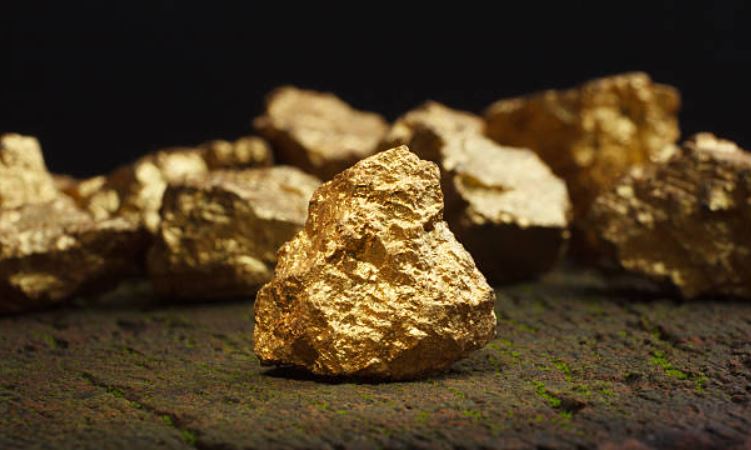Togo’s rich natural resources drive its economy. With 60 million tons of reserves, it is among the world’s top phosphate producers. In 2023, phosphate mining contributed significantly to exports, reaching 1.54 million tonnes of production.
Other important minerals are limestone, gold, diamonds, marble, manganese, and bauxite, though some deposits, like iron ore and bauxite, have low mineral content.
Limestone reserves near Lomé support cement production, while gold deposits in the north are underexplored. Agriculture also plays a major part, employing much of the population.
Arable land covers 5.2% of Togo’s area, producing staples like maize and export crops such as cocoa and coffee. However, sustainability faces challenges. Deforestation and limited rainfall affect resource management.
Togo’s Natural Resources And Their Locations
| Natural Resources | Locations |
|---|---|
| Phosphate | Hahotoé, Kpogamé (northeast of Lomé) |
| Limestone | Tabligbo (near Lomé) |
| Arable Land | Central and Southern Regions |
| Gold | Northern Togo (Mango, Dapaong) |
| Diamonds | Kara Region, Atakpamé |
| Marble | Plateaux Région (Kpalimé) |
| Manganese | Nayega (Kara Region) |
| Bauxite | Central Togo (Atakpamé) |
| Iron Ore | Central Togo (Atakpamé) |
| Kaolin (China Clay) | Tsévié (Southern Region) |
| Rutile | Lomé area |
| Chromite | Kpalimé (Plateaux Region) |
| Uranium | Central Togo (near Atakpamé) |
Here are the major natural resources in Togo, including the ones that haven’t been explored, and their locations: Discoveries In Togo’s Natural Resources
Archaeological evidence suggests that as early as 1000 BCE, ancient tribes in Togo were skilled in pottery production and iron processing. These activities were the first known use of natural resources in the region.
The name “Togo,” meaning “behind the river” in the Ewe language, shows its early settlements along fertile lands and rivers to support agriculture and trade.
Phosphate deposits were first discovered during German colonial rule in the late 19th century. Mining began near Hahotoé and Kpogamé, northeast of Lomé, establishing Togo as a key player in global phosphate production.
To support resource extraction, Germany built railways and a port in Lomé by 1904, enabling large-scale exports of phosphate, cocoa, and coffee. During this period, notable limestone deposits were also discovered near Tabligbo.
After Germany’s defeat in World War I, Togo was divided between Britain and France. French Togoland continued to expand phosphate mining. Additional mineral surveys confirmed marble reserves in the Plateaux Region (Kpalimé) and earlier findings of limestone near Lomé.
In the 1970s, gold deposits were confirmed in northern Togo near Mango and Dapaong. Artisanal mining began but was small-scale due to limited investment.
Central Togo saw discoveries of bauxite and iron ore, though their low mineral content, around 50% for iron ore, limited commercial viability. Further surveys revealed substantial marble reserves in Kpalimé, but industrial development remained insufficient for large-scale extraction.
Extensive exploration confirmed some manganese deposits at Nayega in northern Togo. By 2023, large-scale mining plans were in progress to focus on exports.
Kaolin deposits near Tsévié in southern Togo have been identified for ceramics and industrial applications. Rutile, used for titanium dioxide, was discovered near Lomé, while chromite was found around Kpalimé.
Both are still underexplored but hold industrial potential. Recent studies saw uranium deposits near Atakpamé in central Togo, though further exploration is needed to assess their viability for energy production.
Phosphate remains Togo’s most significant mineral resource, with reserves exceeding 60 million tons. In 2023 alone, phosphate production reached 1.54 million tonnes. According to World Bank data, natural resource income contributed 7.86% to Togo’s GDP in 2021, up from 4.73% in 2020.
READ ALSO: Mali’s Natural Resources: Locations, Discoveries, Viability, Export Potential, And Economic Impact
Economic Viability And Contribution of Togo’s Natural Resources
Togo’s resources drive industrial growth, foreign earnings, and employment. However, some are still underutilized or face commercial challenges.
Economic Viability Of Natural Resources
Togo’s natural resources are diverse, but their economic viability varies. As we’ve said, Phosphate is still the most significant, with substantial reserves and strong global demand.
In 2023, phosphate production reached 1.54 million tonnes. Limestone supports cement production. Gold and diamonds, though secondary, offer potential for further mining development.
Bauxite and iron ore face challenges due to low mineral content, limiting commercial viability. Marble and kaolin reserves are underutilized, presenting untapped opportunities for future investment.
Contribution To GDP And Employment
The mining sector contributes about 4% to GDP, with phosphate leading the way. In 2021, income from natural resources accounted for 7.86% of GDP, rising from 4.73% in 2020. Agriculture, including cocoa and coffee, is the backbone of employment, engaging nearly two-thirds of the workforce.
Mining provides jobs but is secondary to agriculture. However, as the industry expands, it has the potential to generate more employment opportunities to support economic growth.
Export Potential Of Togo’s Natural Resources
| Resources | Primary Export Market | Export Value |
|---|---|---|
| Phosphate | India, Australia | $356 million |
| Limestone | Regional construction markets | $10 million |
| Coffee | European Union | $50 million |
| Cocoa | European Union | $100 million |
| Cotton | Asian textile markets | $20 million |
| Soybeans | European Union (organic) | $15 million |
Togo exports its resources worldwide, focusing on key markets. Phosphate is mainly shipped to India and Australia for fertilizer production.
India’s agriculture sector depends on imports, with Togo supplying about 10% of its phosphate needs. In 2023, exports to India reached $220 million.
Coffee and cocoa go to Europe, where they are processed into consumer products. The EU is a major buyer, benefiting Togo through trade agreements. The Everything But Arms (EBA) initiative allows duty-free, quota-free exports, boosting competitiveness.
Organic soybeans also reach the EU, benefiting from agreements supporting organic farming. This niche market has grown steadily, with exports rising 15% annually over five years.
Aside from established markets, Togo is exploring new trade opportunities. Demand for minerals and agricultural products is rising in Asia and Africa. China and South Africa, for example, offer potential for phosphate and mineral exports.
There’s room to expand. Manganese, marble, kaolin, and rutile remain underutilized. Government initiatives aim to improve trade logistics and boost local processing.
Developing fertilizer plants could add up to $100 million in annual exports. Regional trade agreements have more opportunities. The African Continental Free Trade Area (AfCFTA) could open larger African markets. In 2025, intra-African trade is expected to grow by 50%.

